School board
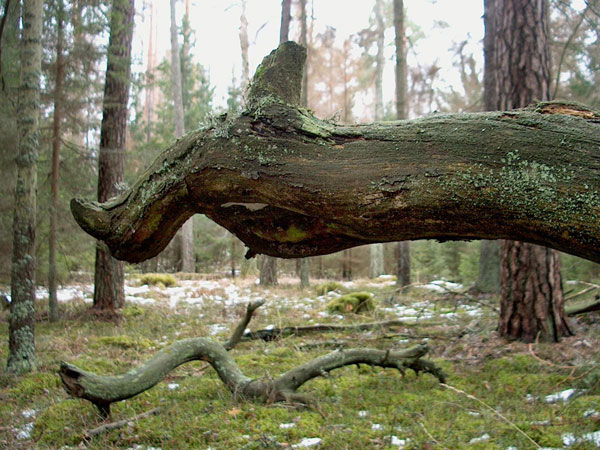
/ Lilia Kobzik
The Russian magazine Ogonyok has entertained readers with an article in which the author originally formed the ten most recognizable symbols of Russia. In any case, according to the editors, it is in these brands that the particularity of the country is for a simple foreign tourist. These symbols are: bear, matryoshka, vodka, cap with ear-flaps, samovar, balalaika, Spasskaya Tower, birch, troika, KGB. We will try (adjusted for subjectivity, of course) to form a similar rating for Belarus. Alternatively, it can be:
1. Bison
Today, perhaps, the most replicated national symbol and souvenir - convenient in graphic design, well drawn on the labels. In addition, the concept itself contains a considerable element of the exotic, a direct indication of the peculiarity - the prehistoric beast lives only here, and several copies in Poland, with which we, it seems, have a lot of common symbols indecently. Currently, the gigantic size of the models of these harsh animals, standing along the tracks, partially replace us the objects of roadside service.
2. Belovezhskaya Pushcha

A century-old dense forest, a subject of admiration and white envy of correct Europeans, who on their plains long ago turned forest tracts into licked forest parks and exemplary private lands, where pines and spruces stand like thoroughly thinned carrots in the beds of an orderly hostess.
3. Bulba

A potato is both an element of folklore, a staple food, and a peculiar mental basis on which other components of a national character are molded. Accordingly, “Bulbash” is not just a brand of popular vodka, it’s a character - unpretentious, non-proud, tolerant.
4. Stork

Symbol of national purity. Also well reflected in the souvenir products. And if bison can only be seen in captivity, then storks in the Belarusian village are on all pillars adapted by common efforts of people and birds for large, incredibly spreading nests.
5. Cornflower
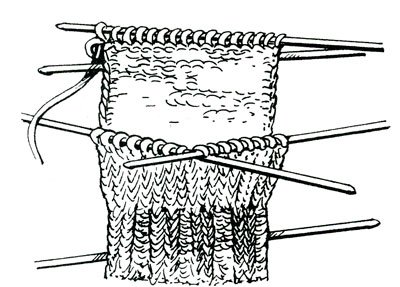
This blue wild flower is immortalized in the logo of Belarus as an attractive country for tourism (if anyone does not know). We really have a lot of cornflowers, however, there are even more dandelions and lupines, but it’s not surprising to fall into frustration, and from cornflowers, it is considered fit to strike poetry.
6. Trasyanka
This is actually something unique. Local surzhik, collected at least from two languages and even equipped with such pronunciation, which envelops any simple word with unique color. The principle of word formation in this case consists in combining parts of words from the Russian and Belarusian languages. For example, a concept that is close to inbound tourism: “will come” (Russian) - “preydze” (Belarusian). We take the basis of the Belarusian, add the Russian suffix, it turns out - "go" (in the end do not forget about our most important principle: soften).
7. Tractor "Belarus"

The symbol of the industrial power of the country, firmly standing on the agricultural land of many "fraternal republics", scattered across different continents. Of course, not so glamorous technical brand, like the car "Mercedes", the motorcycle "Yamaha" or the TV "Sony", but hardly any other country will find a tractor with nationality.
8. Lukashenko

Here, as they say, neither add nor subtract. To date, the only surname associated with Belarus, capable on a massive scale to cause emotions from foreigners. The effect of recognition was achieved systematically and purposefully - still, so many years in power! ..
9. Radziwills
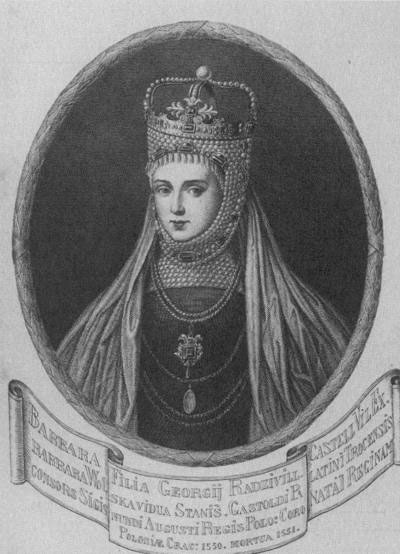
Also a personal symbol, but going back to the historical past. The surname, due to its sonority and importance, turned out to be twisted both in infrastructure facilities and in gastronomic brands - bread, champagne, restaurants.
10. Marshes
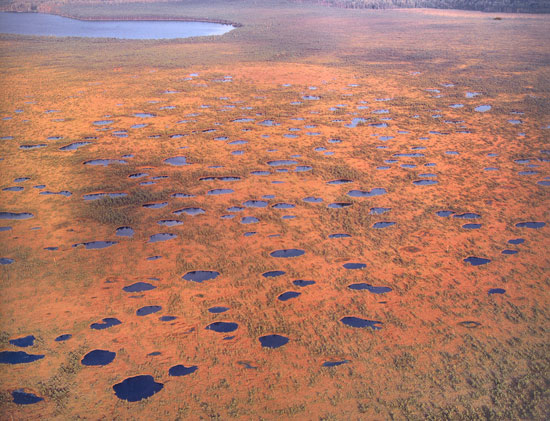
That is - in the plural and the literal sense. Otherwise, it will also be a symbol, but a negative one. It is known that Belarus ranks first in Europe in terms of the area of this and that way of a natural attraction played up in various contexts - it looks not very attractive, but, by the way, it releases 15 times more oxygen than a similar area of forest. How to use this jewel to attract fastidious tourists is not yet decided, but without a doubt these huge swampy and impassable spaces set us apart from the rest of Europe, and we are not going to drain them anymore.
P.S.Two dozens of Belarusian symbols most frequently mentioned in the reviews by foreigners remained behind the scenes: clean streets and beautiful girls. But, perhaps, it is not worthwhile to insert them into the rating - too intimate, besides, the Radziwills and the marshes close to the list.
TUT.BY:Dear friends! Perhaps you imagine a different ten symbols of Belarus. We will be glad if you tell about it on the forum.
The development of the fine arts of Belarus took place in close contact with the art of Russia, Ukraine, Poland and Lithuania, which undoubtedly was progressive.
The main types of applied art were wood and bone carving, ceramics, weaving and metalworking.
Traditional Belarusian ornament is mostly geometric. In medieval Belarus, wood and stone carvers were famous for their skill, creating a special style - the so-called "Belarusian carving" - a lush floral ornament in which stylized images of birds and animals are woven. Iconostases and the royal gates of Orthodox churches were often true works of art, testifying to the talents of the Belarusian people.
A prominent place in the decorative art of Belarus was taken by the production of tiles for facing buildings. On the preserved ceramic tiles of the XIV-XV centuries, you can see a galloping horseman with a bare saber and a deer with a deer. The image of the rider is close to the coat of arms of the Grand Duchy of Lithuania, which became widespread in heraldry in the following centuries, as well as in the visual arts of Belarus and Lithuania.
Often there are ceramic tiles decorated with flowers and plant shoots. The favorite floral motifs were cornflower and grapevine.

Such ceramists of the 17th century as P.I. Zaborsky, Stepan Ivanov, nicknamed Polubesy, Ignatius Maksimov, were famous masters of their time and worked not only in their homeland, but also in the Russian state: first on the construction of the Resurrection Church in the New Jerusalem Monastery, then in the Armory Chamber of the Moscow Kremlin. The remarkable ceramic belt of the Resurrection Cathedral, made by Stepan Polubes, was decorated with an ornament, popularly known as the "peacock eye". The decorative decoration of this cathedral had a great influence on the tiled decor of the buildings of Moscow in the last years of the 17th century.
The art of artistic metalworking has spread no less than artistic ceramics. Here are mainly used images of flowers and plant shoots.
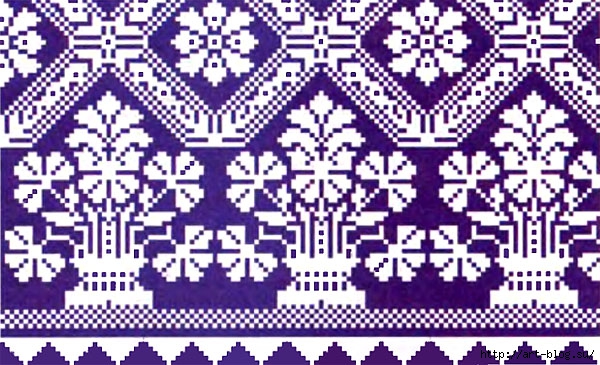
In the XVIII century. in Ureche was founded the manufacture of household and art glass. She produced decorated with a diamond facet and engraving dishes and mirror medallions with engraving, which served as the decoration of the ceremonial halls. The decor of the mirrors with the emblems of the magnates united the features of the Middle Ages and the elements of the Baroque. Ureicheskoe glass gained fame far beyond the borders of Belarus - in Poland, Lithuania, Russia.
In the second half of the 18th - first half of the 19th centuries, the so-called silk belts weaved with gold and silver became very popular. They owe this name to their place of manufacture - Slutsku. In those days they were called "Persian sash."
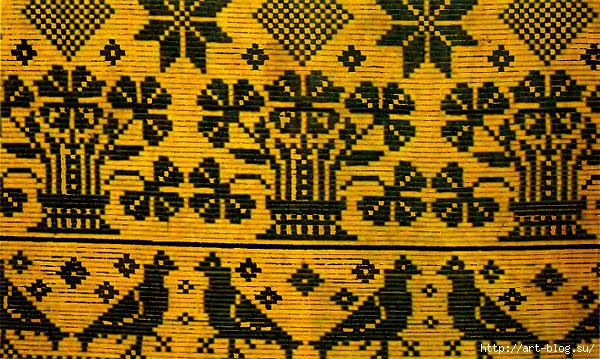
Ornamental compositions of the Slutsk belts, as a rule, were composed of three parts: a narrow border, decorated with a stylized floral ornament, covering the belt from all sides; the main field of the belt, decorated with somewhat quieter ornamental forms and often dissected by transverse stripes, and two rectangular stamps located at the ends of the belt, usually decorated with one, two vases, or medallions with flowers or large bouquets, stars, and sometimes geometric shapes.
![]()
The motifs of the flora were originally borrowed from the East, but gradually the flowers closely familiar to the Belarusian masters - cornflower, bell, porridge - replaced these patterns. Belts were weaved two-sided, when they were rolled on special machines, the brilliance of gold and silver threads was further enhanced. This brilliance combined with the brightness of the pattern, the purity of the tones — scarlet and blue, ornamental and blue — gave the Slutsk belts both elegance and severity. At the corners of the belt, the names of the city and the name of the master were usually woven, first in Latin letters, later in Cyrillic.
Being the subject of men's clothing, the Slutsk belt gave life to the widespread in the XIX century. in Russian, and then the European women's costume thin woolen shawls. Their patterns repeated all elements of the Slutsk belts.

Among the handicraft products of the first half of the XIX century. weaving items, carpets with floral patterns, similar in design to Ukrainian lint-free kilims, stand out. Currently available pile carpets with a Belarusian geometric pattern and decorative motifs of Slutsk belts.
For weaving, a characteristic feature is the use of the natural color of the material: a harsh tone of linen thread, brown shades of wool yarn. The favorite combinations of colors in dyed fabrics are combinations of red with blue, red with violet, green with yellow. Geometrical motifs dominate in ornamentation (usually variations of a rhombus and a square).
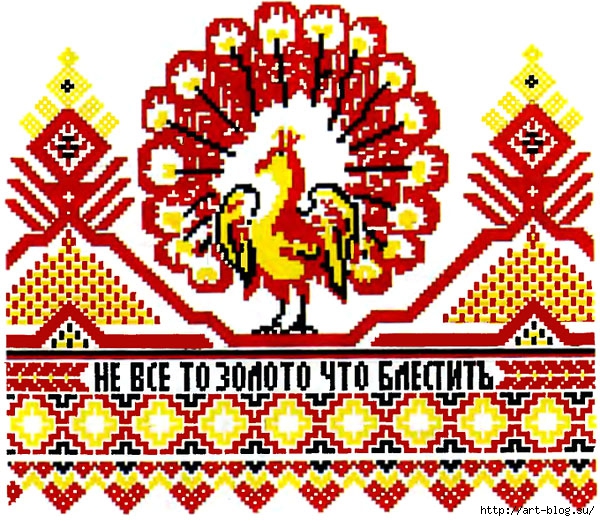
For several centuries, works of great artistic value were created in the visual arts of Belarus. They testify to the amazing talent of the Belarusian people.
Main sources:
L.V. Fokina, "Ornament", series: Supreme., - Publishing house: Phoenix, 2007. - 208с.
Katsar M.S. "Belarus arnament: Weaving. Vyshyўka / Belarusian ornament": Weaving. Embroidery
Symbols of the Belarusian ornament

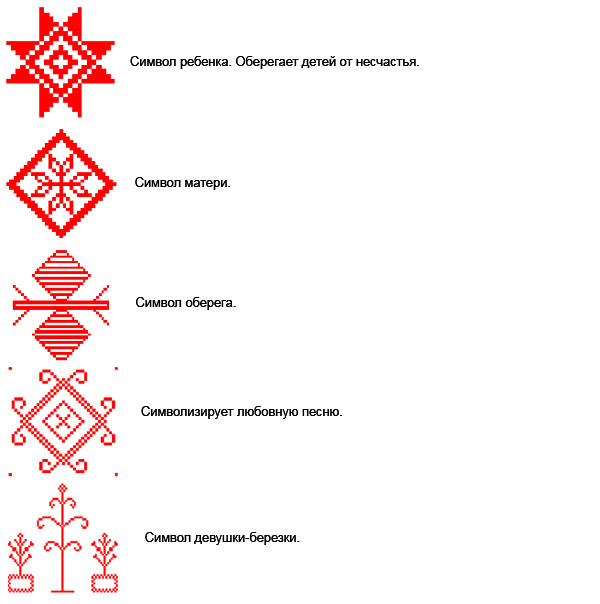
Also on September 19, 1991, the Supreme Council of the BSSR decided to change the name of the country: the Belarusian Soviet Socialist Republic became the Republic of Belarus.
The “chase” dates back to ancient times, while the national flag was codified relatively recently.
Belarusians have long appreciated the combination of white and red colors. In the painting of the XVI century. The “Battle of Orsha” peaks of the GDL warriors are decorated with flags depicting a red cross on a white field - the cross of St. George. The alternation of white and red stripes can be seen on the banners of the kings of the Commonwealth. In Christian symbolism, a red belt (or cross) on a white field symbolized the blood of Christ.
However, the white-red-white flag in its current form, unlike “Chase,” has a specific author. The flag was created in 1917 by Claudius Duzh - Dushevsky. A young architect, a graduate of the St. Petersburg Mining Institute and a talented theater-goer, asked the Belarusian organizations of St. Petersburg to make a sketch of the national flag.
The flag created by Duzh - Dushevsky was first raised in the spring of 1917 on the building of the Belarusian Society for Assistance to War Victims in St. Petersburg (Duzh - Dushevsky was an employee of this Society). And on March 12 in Minsk for the first time a mass holiday was held - the national Day of the Belarusian Sign. The white-red-white ribbon in 1917 was also worn by servicemen - Belarusians on the fronts of the First World War, in order to recognize their own.
In December 1917, in Minsk during the IV Congress, the white-red-white flag was unanimously recognized as the national symbol of Belarus. He became the national flag of the Belarusian People's Republic.
In Soviet times, the flag was banned. For his image could lose work, and even life. At the same time, the red pass on the flag acquired a new explanation - blood shed for the fatherland.
The coat of arms "Chase" - a warrior with a raised sword on a white horse in a red field - known in Belarus since ancient times. As the state emblem of the Principality of Lithuania, the ancient Belarusian state, he began to use the Grand Duke Vytenis at the end of the XIII century.
“Vytenis began to reign over Lithuania, established his own emblem and the whole princedom of Lithuania: the knight of armory mounted on a horse with a sword, which is now called“ Chase, ”writes the Gustynsk chronicle.
"Chase" was called the noble custom, distributed in our lands. In the case of a sudden raid of enemies, all the men who could hold a weapon in their hands, mounted their horses and pursued the invaders in order to free the captured compatriots.
During the time of Grand Duke Jagiello (XIV century), a six-pointed cross appeared on the “Chase” shield — a sign of the Hungarian kings. This happened after the Grand Duke married Jadwig, a Polish princess of Hungarian origin. The sign resembled the Yarilo cross, long known to our ancestors, a symbol of the sun god and fertility. The church gave "Chase" a different meaning: the priests were inclined to consider it an image of St. George, the heavenly patron of Belarus.
The image of “Chase” was decorated with all state documents of the then Belarus, pages of “Lithuanian Metric” and “Charter”. The “chase” was on the flags of the Belarusian-Lithuanian army in all the decisive battles of those times - from Grunwald to Orsha. After the Union of Lublin Union, “The Chase”, along with the Polish white eagle, was placed on the coat of arms of the Commonwealth and on the royal banner.
Even after the division of the Polish-Lithuanian Commonwealth in the XVIII century, when Belarus fell under the power of Russia, “Chase” remained the emblem of the Belarusian provinces. She got on the badges of Russian troops located in Belarus, and even on the coat of arms of the Russian Empire.
The seal with the emblem was also owned by Kastus Kalinovsky - the leader of the 1863 uprising.
In 1918, Pogon became the state emblem of the Belarusian People’s Republic - the first independent Belarusian state.
When at the end of the 1980s the struggle for the independence of Belarus was launched, “Chase” appeared as a logo for underground leaflets and the first independent newspapers. New pictures based on her motives and songs about her appeared.
With the restoration of independence in 1991, "Pogon" regained state status. Artists Evgeny Kulik, Vladimir Krukovsky and Lev Tolbuzin worked out a new canon for her. They gave the six-pointed cross on the shield the appearance of the cross of Euphrosyne of Polotsk, the patron saint of Belarus. On the "chase" the Belarusian army swore. She decorated the text of the Constitution and the rostrum on which the president swore.
In connection with the National Flag Day, an interesting episode from the book by Sergey Naumchik. September 19, 1991, before the adoption of the white-red-white flag and the coat of arms "Chase" is missing a few votes. Pozniak addresses Communist Deputy Mikhail Zhukovsky, who spoke about the flag of collaborators a couple of minutes before. Pozniak: “Mikhail Dmitrievich, the nation state is above any party ideology. If we don’t have it, we don’t have its national symbols, then we won’t have anything. We’ll become nothing. I ask you very much. Once in a lifetime. Vote for a flag for the sake of our future. We are Belarusians. " Zhukovsky's answer: "OK. I will vote." And voted. The result of the vote: 231 votes, exactly as much as necessary. The story can sometimes be changed with a few polite words.
However, in 1995, Alexander Lukashenko, in order to get support and money from Russia, decided to take a course on Russification. In the atmosphere of dictate, a “referendum” was announced. Among the questions were the change in state symbols and the introduction of Russian as a state language. To motivate this shift, propaganda used shameless falsifications.
Director Yuri Azarenok shot the film “Children of Lies”, in which he argued that “The Chase” and the white-red-white flag ... are fascist, on the grounds that the Belarusians used them during the German occupation. The fact that the “chase” existed for centuries before the war, the film was silent.
The Germans, the Swedes, the Ukrainians, the Lithuanians - all hold on to their national symbols and build national states. In all of Europe, only Belarus went after free money with Russian money.
But the meaning of “Chase” is such that it was not possible to erase it from memory. The national symbols continue to be used by the intelligentsia, the youth. Many students wear badges with a national flag or "chase." On the Internet, many post "chase" on their avatars on social networks.
Stickers with "chase" can be seen on the machines. Thousands of apartments have white-red-white flags.
Paparats-kvetka Another Belarusian national flower - of course, “paparats-kvetka”. The fern, as we know, blooms only in legends. And only on the night of Ivan Kupala. Logically, it is easy to notice a flower - it burns like fire. But to find and disrupt is problematic. Unclean power interferes. Ripped off - you begin to understand the language of birds and animals, to see treasures through the ground. Chuts tolki Kupalskay holy Nablizhytsa nochay svay, Yak paparats-kvetkay sworn Charuy nyashasnyh lyuzey ... - claimed Yanka Kupala. Vincent Dunin – Martsinkevich and Jozef Kraszewski, Vladimir Korotkevich and Mihas Charot wrote about the mystical flower. And how many “paparats-Kvetak” in our life - from a restaurant to a chop… July 7 On the night of July 6-7 (among Catholics and among Slavs, from June 23 to 24) Kupala (Kupalle, Jan, Ivan) was celebrated which was a peculiar culmination of summer events in the life of the people. Ivan Kupala is one of the most revered holidays among Belarusians today. Kupalle is a truly pagan holiday in honor of the summer solstice. Its analogues exist in almost all countries of the world. During the summer solstice, the flowering of nature reaches its apogee: wheat, buckwheat and millet sprouted in the fields, flax and potatoes flourished, the offspring of the animals ended. Therefore, our ancestors these days tried to thank Mother - Nature for a good harvest, hunting, milk yield and calving in domestic animals. People made sacrifices and the celebration of Ivan Kupala showed unity with nature. girls were engaged in fortune telling: they lowered wreaths into the river and, following the movement of the wreath, made conclusions about their future fate. An amazing legend of the fern flower (paparats-kvetka), which Perun’s fire descends, is associated with Kupalim, and at midnight the fern blooms for a few moments with fiery color. You need to catch this moment, and then all the wishes of the owner of a fern flower will come true, he will know about everything that is happening in the world. In the legends it is said that on the Kupala night the plants talk among themselves, the trees move from place to place, and the rivers shine with a magical light. There is a belief that on this night all sorts of wizards and witches spend their festivities stealing horses, taking milk from the cows. To protect themselves from the evil force, the owners hung nettles or sharp objects that the evil forces could cut themselves over: the needles, sickles. By morning, young people bathed in the rivers, swaying in the morning dew, met the sunrise, in whose honor Kupala was celebrated. They said that the sun "plays" in the Kupala morning - it doubles, triples and shimmers in different colors. Documentary film from the cycle of 1000 worlds "On the night of Ivan Kupala". The film shows the pagan holiday of summer solitude, the night of Ivan Kupala, Russian neopagans remember ancient Russian rituals associated with the pagan sun god Yarilo, witches night, fern flower, pouring water, jumping over the fire and wreaths on the water - this is Ivan Kupala's holiday.
Belarusian colors - only red on white.The Belarusian ornament is a traditional set of symbols and colors that have been used by our ancestors for many centuries since pre-Christian times. Belarusians, and once all the Slavs, used two colors - red on a white background.
These colors have a deep symbolism. White background - the color of purity. Red is the color of the sun, blood as a symbol of life, and in general a symbol of life.
Belarusians, like none of the Slavs, preserved the purity of patterns until the twentieth century. Our roots are a red pattern on a white background. From the end of the 19th century, black was added. But he never prevailed, only shaded red.
Sign of fertility, the abundance of the fruits of the earth. Wearing it is designed to increase vitality, strengthen the ability to childbearing.
And all the other colors have never been used in our ornaments. In folk costumes there are blue, yellow, but never, by the way, green. The mystery of tradition. Green is considered a symbolic color among Muslim peoples. And here, despite the abundance of greenery, has never been used by the people. True, in the book there are many and polychrome samples. But they are clearly late.
![]()
Sun sign - rhombus with spikes. It is interesting that on ancient bone or wooden products, on female combs, which were worn on the head and which were supposed to be amulets, the solar sign was depicted as a circle with a dot in the middle. You cannot make a circle in textiles, it has transformed into a rhombus. A diamond with curved ends, the so-called swastika, is also a sun sign, a sign of the sun's cycle. It can be seen in Belarus on women's aprons in the early twentieth century.

Earth sign - crossed out diamond with dots.

Human symbol - eight-pointed socket. This is still an Indo-European motive. These signs are recognized by researchers as the main ones. Undoubtedly, there were more of them, but some were forgotten, and some were impossible to decipher.
Belarusians had no symbols of death
- All these symbols are very strong signs that should protect a person. Although we now do not put in them the meaning of the amulet. And our ancestors believed that they help. Therefore, we did not have signs that would symbolize death, pain, grief.
You thought about why the ornament on the clothes is placed only in specific places - on the collar, on the cuffs, along the shirtfront, on the headdress around the face. They are where the tears, where evil can penetrate to the body of man. Everything else is protected by a cloth. And the canvas was woven on the cross, on which these signs were applied.
1. The star of man in heaven;
2. The sun gives strength and harvest;
3. The moon protects children from night fears;
4. Fire cures from colds and dumbness;
5. Perun protects from the evil eye, punishes devils with his arrows;
6. A grandfather in the next world prays for the health, the happiness of the living relatives;
7. Capricorn heals and protects all living creatures from diseases and uncleaners.
Embroidered the sun to the son recovered
Our ancestors believed in the magical power of symbols and signs.
- The Belarusians had a great culture of ritual towels. In each region, weaved, embroidered their own - somewhere from a crop failure, somewhere from a drought, in wartime - to famously go around the village. Somewhere in the village, women gathered and weaved overnight, ”says Yevgeny Sakhuta.
There are many such examples in the book.
An eighty-year-old grandmother recalled how her son fell ill. Nothing helped. And as soon as she embroidered the sun, the son recovered immediately.
“My two older children died,” said another woman. “I'm afraid Sonia won't die either.” I embroidered two towels with a baby pattern. One took her to church and hung it on the icon of the Mother of God, the other to the grave of her grandfather.
Belarusians even had their own astrology.
- At night and in the daytime, the fortune tellers looked at the sky - at the sun, moon, stars. Then they advised us what to embroider on benchmarks. I, on the advice of the grandmother Kupreiha, embroidered such patterns.
- School board
- The strangest flags of the world - πάπυρος
- Methods of conducting a psychological examination of children with zpr to schooling
- National flag and emblem of Nepal - symbols of the country
- Passage of game Call of Duty
- Download Belarusian riddles with riddles in the Belarusian language
- Battle banners dopetrovskoy Russia

 Live journal
Live journal Facebook
Facebook Twitter
Twitter